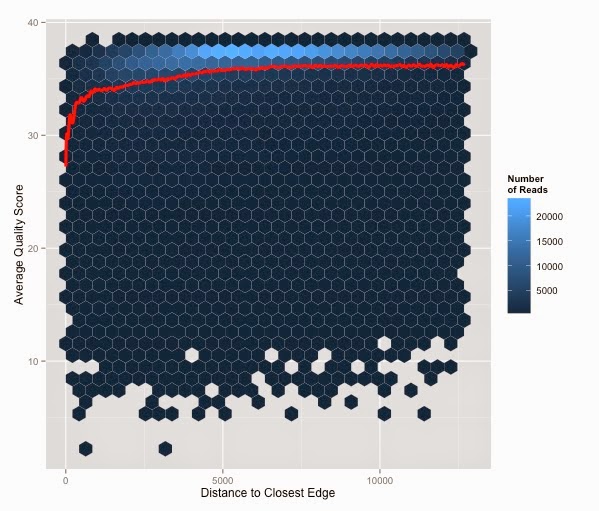I recently found an intriguing microbiome paper, and I would like to post my thoughts about it.
Citation
Panke-Buisse et al., Selection on soil microbiomes reveals reproducible impacts on plant function, ISME Journal 2014, doi: 10.1038/ismej.2014.196.
Review
The main hypothesis in this paper tests if phenotypes from a soil microbiome connected with a single plant genotype can be recapitulated in other plant genotypes. First, early- and late-flowering time associated soil microbiome were generated. Ten generations of Arabidopsis thaliana Col-0 were grown and at each generation soils from the four earliest and latests flowering pots were collected as the inoculum for the subsequent generation. Using soils from generation 10, final early- and late-flowering time associated inoculums were derived. These inoculums were then administered to four Arabidopsis thaliana ecotypes (Rld, Ler, Be, and Col-0) and a close relative, Brasica rapa. Flowering time, plant biomass, and nitrogen mineralization enzyme activity for each of the genotypes were statistically different between early- and late-flowering associated inoculum treatments except Ler (Fig 4). Microbes specifically associated with early- and late- flowering time treatments were found in low abundance suggesting that low-abundance microbes can contribute significantly to interesting phenotypes.
Positives In general, I found this paper to be very insightful for the following reasons:
Critiques and Questions
Future Work
This experimental design could be used to address the following intriguing hypotheses:
Citation
Panke-Buisse et al., Selection on soil microbiomes reveals reproducible impacts on plant function, ISME Journal 2014, doi: 10.1038/ismej.2014.196.
Review
The main hypothesis in this paper tests if phenotypes from a soil microbiome connected with a single plant genotype can be recapitulated in other plant genotypes. First, early- and late-flowering time associated soil microbiome were generated. Ten generations of Arabidopsis thaliana Col-0 were grown and at each generation soils from the four earliest and latests flowering pots were collected as the inoculum for the subsequent generation. Using soils from generation 10, final early- and late-flowering time associated inoculums were derived. These inoculums were then administered to four Arabidopsis thaliana ecotypes (Rld, Ler, Be, and Col-0) and a close relative, Brasica rapa. Flowering time, plant biomass, and nitrogen mineralization enzyme activity for each of the genotypes were statistically different between early- and late-flowering associated inoculum treatments except Ler (Fig 4). Microbes specifically associated with early- and late- flowering time treatments were found in low abundance suggesting that low-abundance microbes can contribute significantly to interesting phenotypes.
Positives In general, I found this paper to be very insightful for the following reasons:
- Soil Microbial phenotypes can persist in novel hosts. This is a really cool result and could have direct implications for building field-useful microbiome treatments. However, flowering time is a well conserved phenotype so this result may not apply to other specific phenotypes of interest such as crop yield, disease resistance, or with greater host genetic divergence (i.e. corn flowering time vs arabidopsis).
- Low abundance members of a community can drive an important phenotype. A common assumption in metagenomics is that the most abundant members of a community are the most important. Perhaps more focus should be geared toward linking microbes to phenotypes regardless of abundance.
- This artificial selection design doesn't require detailed knowledge of genetic mechanisms in order to produce a desired phenotype. It is similar to the old dogma of plant breading where two good plants were crossed to produce an even better plant with no underlying knowledge of the genetic mechanisms. While understanding the mechanisms is important for maximizing the phenotypic benefits, it is not required to generate a positive effect.
Critiques and Questions
- The methods section seems incomplete.
- Why are there so few OTUs in the heatmap and ternary plot? Were OTUs filtered out? I would expect to see hundreds or even thousands of OTUs from soil-derived microbiota.
- Were the wild soils combined at equal ratios?
- What was their measure of flowering time? I think there are well defined methods in the literature for observing flowering time.
- Why are the EF associated samples in the 10 generation experiment actually flowering at a later time in later generations (supp fig 1)?
- Why are the control samples not included in supp fig 1?
- Even though control samples were included as a covariate to generate figure 4, I would have liked to have seen them graphed there as well.
- Perhaps a better way of generating the control samples would have been to randomly pick pots to generate a control inoculum. This was what they did in Swenson et al., 2000
Future Work
This experimental design could be used to address the following intriguing hypotheses:
- Selection on soil microbiomes changes the root endophyte microbial community.
- Redo the experiment with the same design but also 16S profile endophyte microbes.
- It would also be interesting to see if the microbes specific to each treatment are also found inside the root. This would suggest a direct microbial effect on the plant phenotype.
- Selection for soil microbiome associated phenotypes is driven by multiple mechanisms.
- Redo the experiment but don't combine replicates such that the end inocula include four independent lines of selection for both early- and late-flowering time soil microbiomes. Compare microbes among treatment groups looking for different microbial profiles that express similar phenotypes.



